Homemade potato blight spray is one of the ways of effectively controlling or preventing the spread of potato blight, which is caused by the fungal pathogen Phytophthora infestans. Many gardeners and farmers prefer to use DIY remedies due to their affordability, accessibility, and ability to manage the ingredients used.
Keep reading to delve into 2 of the best homemade spray methods, and essential tips to ensure effective and safe application!
Contents
What Is Blight?
Blight refers to a plant disease that causes the rapid and severe decay or deterioration of plants:
- It is often a bacterial or fungal disease that attacks plants and disrupts their normal growth and development.
- It can affect trees, and various types of vegetation, including garden and other nightshade plants.
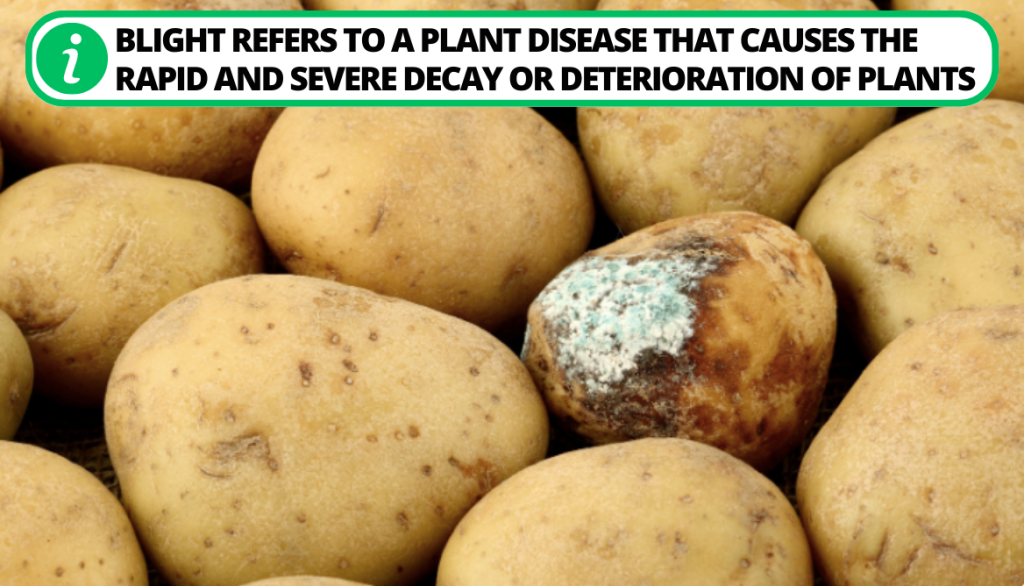
Common Kinds of Blight
There are several types of blight which include:
1. Septoria Leaf Spot
This is also known as septoria or tomato blight caused by the fungus Septoria lycopersici. It is a fungal disease that commonly affects tomato plants.
- The disease initially appears as small, dark spots on the plant’s lower leaves.
- Over time, the spots enlarge and develop characteristic dark centers with lighter edges.
- Septoria leaf spots can cause defoliation and reduce the overall yield of tomato plants if left untreated.

2. Early Blight
Early blight is caused by the fungus Alternaria solani which usually affects tomatoes, potato crops, and other nightshade plants.
- It typically starts as brown spots on the lower plant leaves, which gradually enlarge and develop concentric rings, giving them a target-like appearance.
- If left untreated, early blight can spread to the upper leaves, stems, and fruits, causing defoliation, reduced yield, and fruit rot.
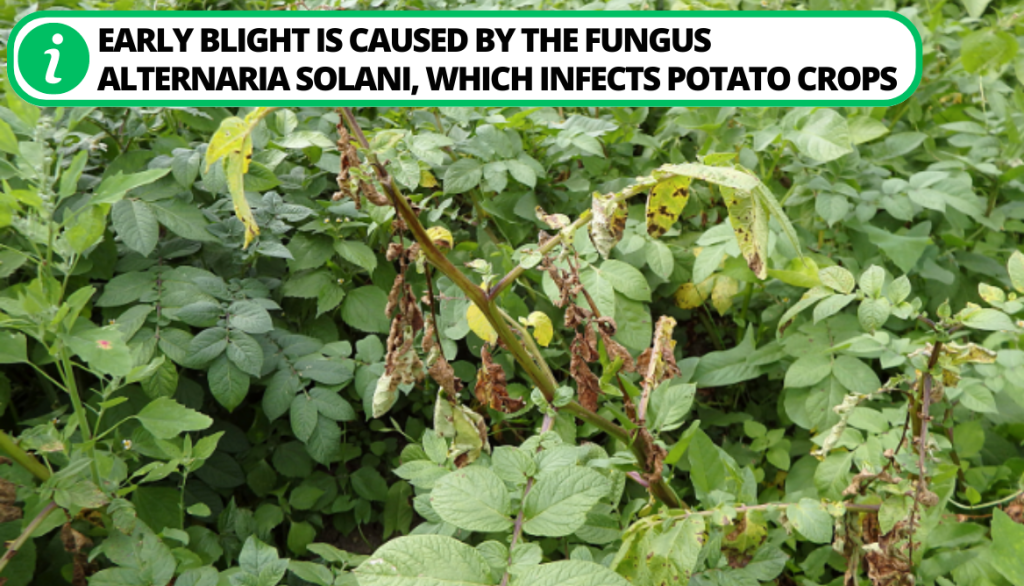
3. Late Blight
Late blight is a devastating fungal disease that affects various plants, including potatoes and tomatoes. It is caused by the pathogen Phytophthora infestans.
- Late blight is known for its rapid spread and destructive nature.
- It can cause large, irregularly shaped dark lesions on only a few leaves, stems, and fruits.
- The lesions often have a fuzzy, whitish-gray appearance, especially in humid conditions.
- This disease can lead to complete crop loss if not controlled.
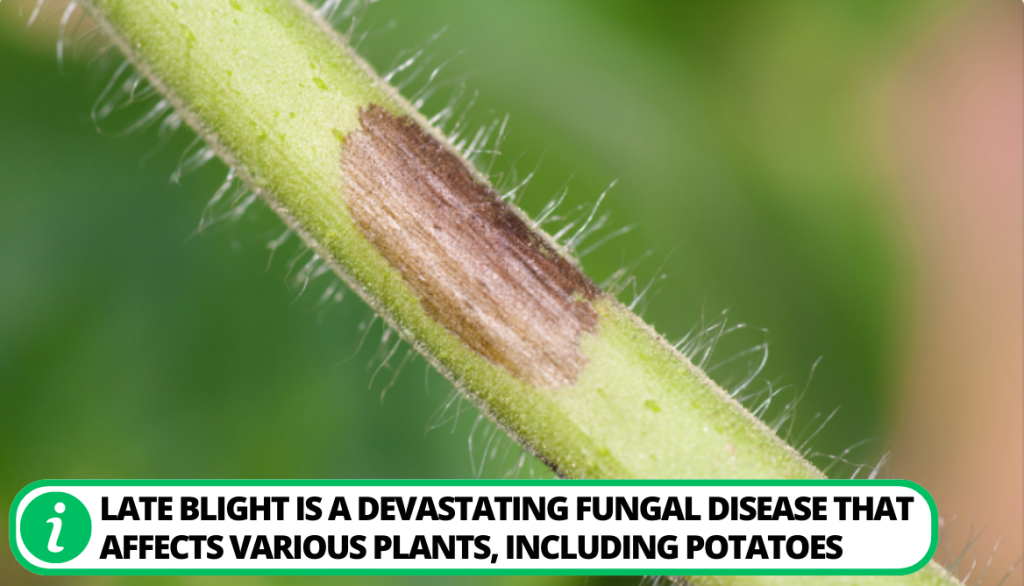
What Are The Symptoms Of Blight?
Blight symptoms vary depending on the specific pathogen and the host plant involved. Here are some common symptoms associated with blight:
1. Leaf Discoloration
Blighted leaves often show signs of discoloration, such as yellowing, browning, or blackening. The discoloration may start as small spots or lesions and eventually spread across the leaf surface.
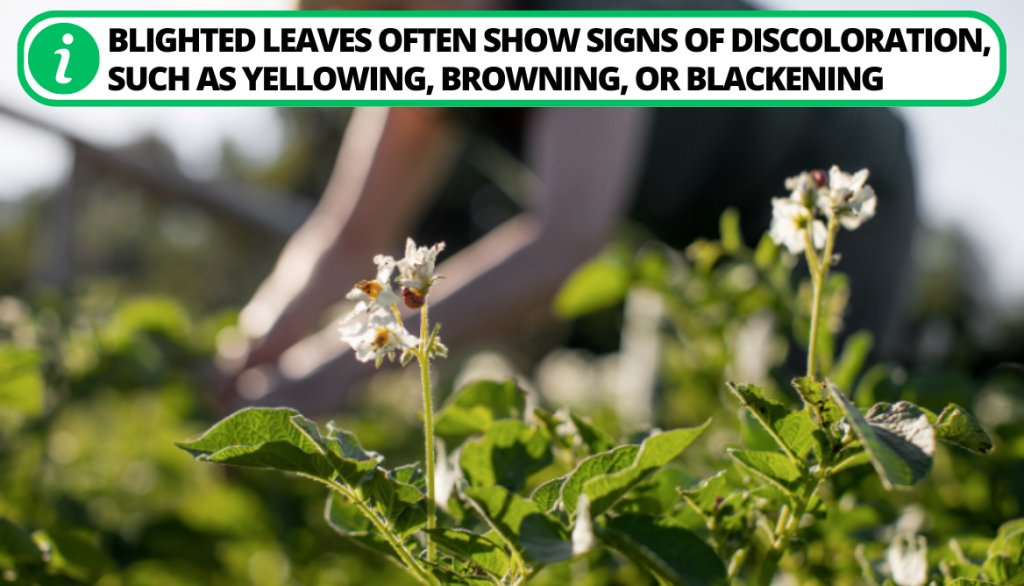
2. Leaf Wilting
Affected leaves may become wilted, droopy, or develop a limp appearance. This wilting is often a result of the pathogen attacking the vascular system, which hampers the plant’s ability to transport water and nutrients effectively.
3. Stem and Shoot Dieback
Blight can cause the stems and shoots of plants to die off. The affected portions may turn brown or black, become shriveled, and eventually wither away. This can lead to stunted growth or the death of the entire plant if left unchecked.
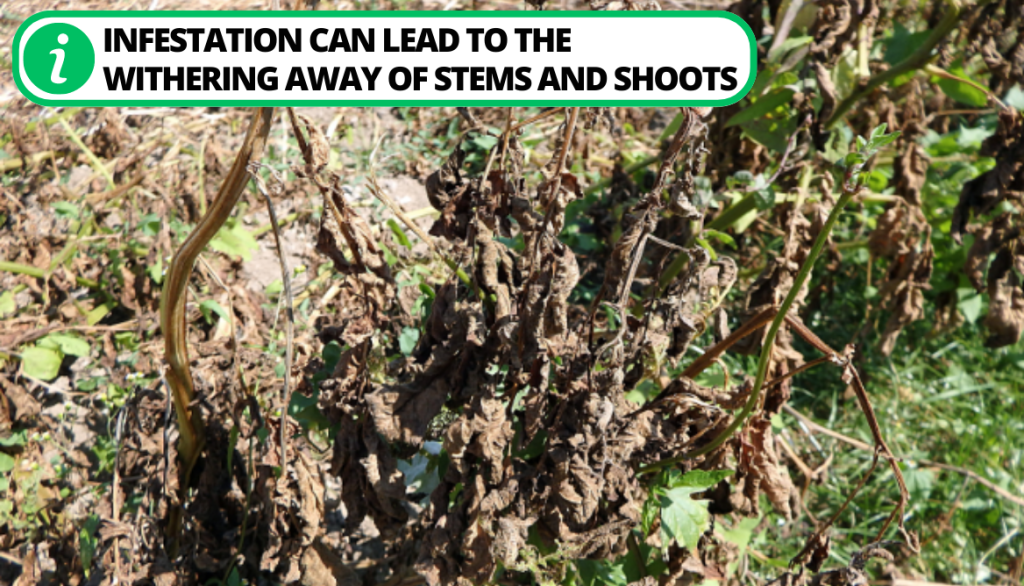
4. Fruit or Flower Rot
In cases where blight affects fruit-bearing plants or flowering plants, the pathogen can cause the fruits or flowers to decay rapidly. This decay often manifests as soft, mushy spots or lesions, leading to the loss of yield or aesthetic appeal.
5. Canker Formation
Certain types of blight can lead to the formation of cankers, which are localized areas of dead tissue on branches or trunks.
Cankers may appear as sunken, discolored lesions with cracked or peeling bark. They weaken the plant’s structural integrity and can serve as entry points for other pathogens or pests.
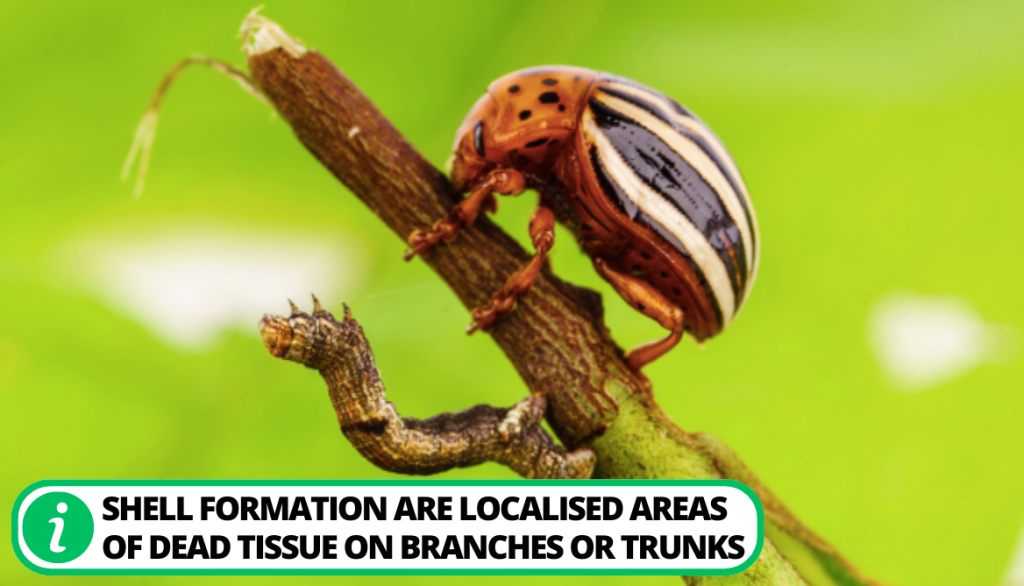
6. Fungal Growth
Some blight-causing pathogens produce visible fungal growth on the affected plant parts. This can manifest as powdery mildew, fuzzy mold, or slimy patches, depending on the specific type of blight.
How Much Damage Can Blight Do?
The extent of damage caused by blight can vary depending on several factors, including the specific pathogen involved, the host plant’s susceptibility, environmental conditions, and the timing and effectiveness of management practices.
- The most severe damage is caused by a late blight known as the Phytophthora infestans fungus. It can cause significant damage to crops, particularly potato plant.
- This disease easily spread, with an entire crop being destroyed within a week of infection.
- Late blight fungal spores are easily dispersed by prevailing wind and water, posing a risk to neighboring fields and harvested crops.
- Some strains of the fungus can survive in cold weather, making control more challenging.
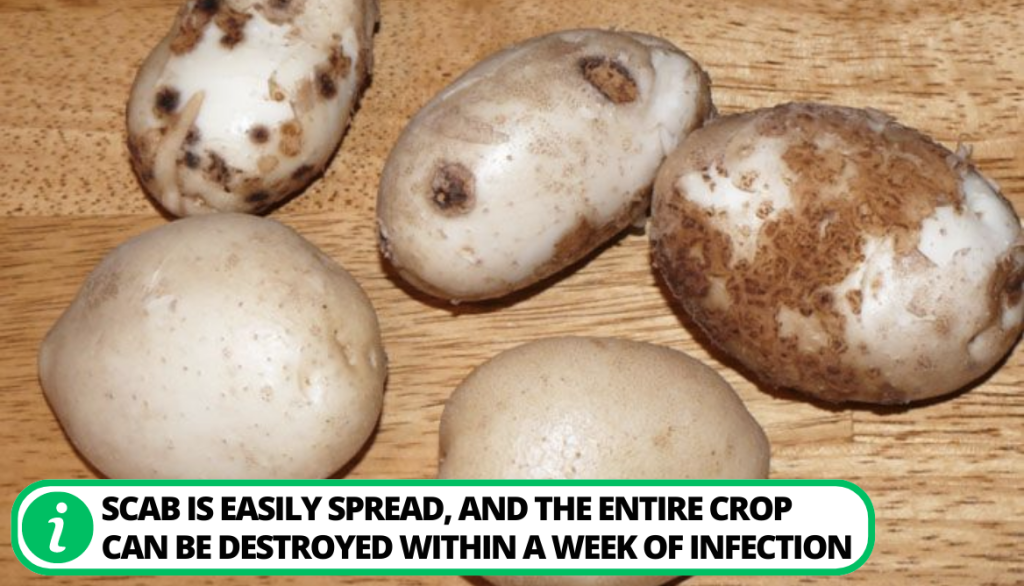
Essential Points Before Using Blight Treatment Spray
Using homemade blight treatment sprays can be an alternative approach to commercial products. However, it’s important to consider the following factors before using homemade sprays:
1. Effectiveness
It’s essential to research and understands the effectiveness of the specific homemade spray you plan to use for the type of blight you’re dealing with.
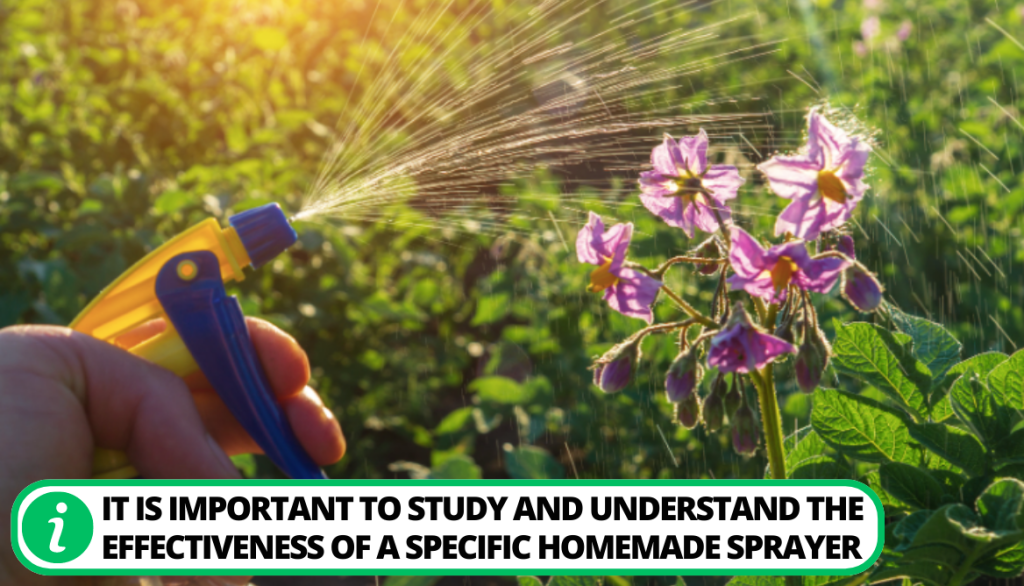
2. Recipe Reliability
Ensure that you’re using a reliable and well-tested recipe for the homemade spray. Look for recipes from trusted sources such as reputable gardening websites, agricultural extension services, or experienced gardeners.
3. Safety Precautions
Homemade sprays can still pose risks. Wear protective clothing like gloves, goggles, and a mask to avoid direct contact and inhalation of harmful substances. Also, keep children, pets, and wildlife away from the treated area during and after the application.
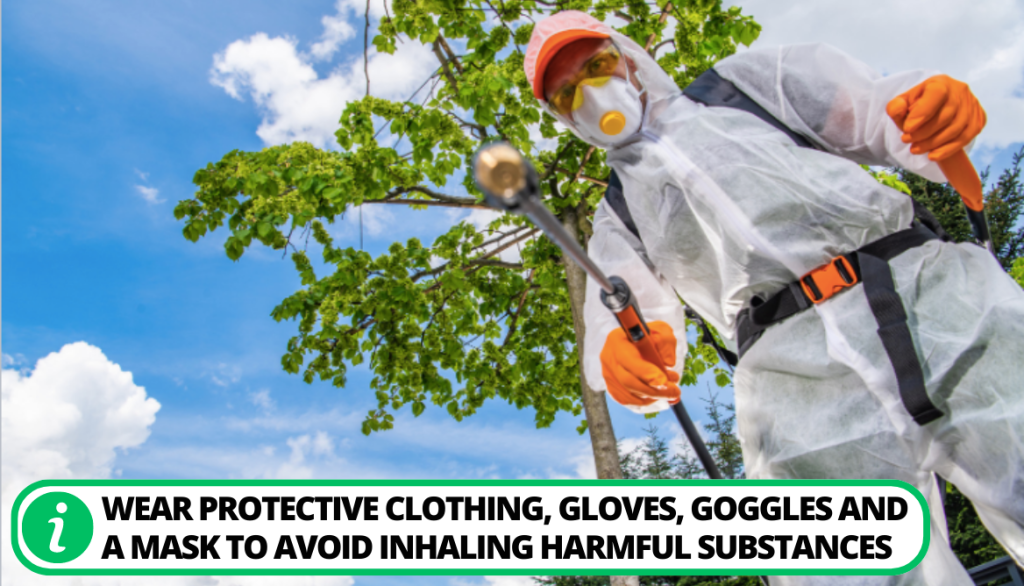
4. Ingredients Availability
Check if the ingredients required for the homemade spray are readily available to you. Some recipes may call for specific ingredients that may be difficult to find or are not easily accessible in your region. Consider the availability and cost of the ingredients before deciding to use a homemade spray.
5. Environmental Impact
Consider the potential impact of the homemade spray on the environment. Some homemade remedies may still have negative effects on beneficial insects, birds, or aquatic life. Be mindful of using environmentally friendly ingredients and avoid harmful substances whenever possible.
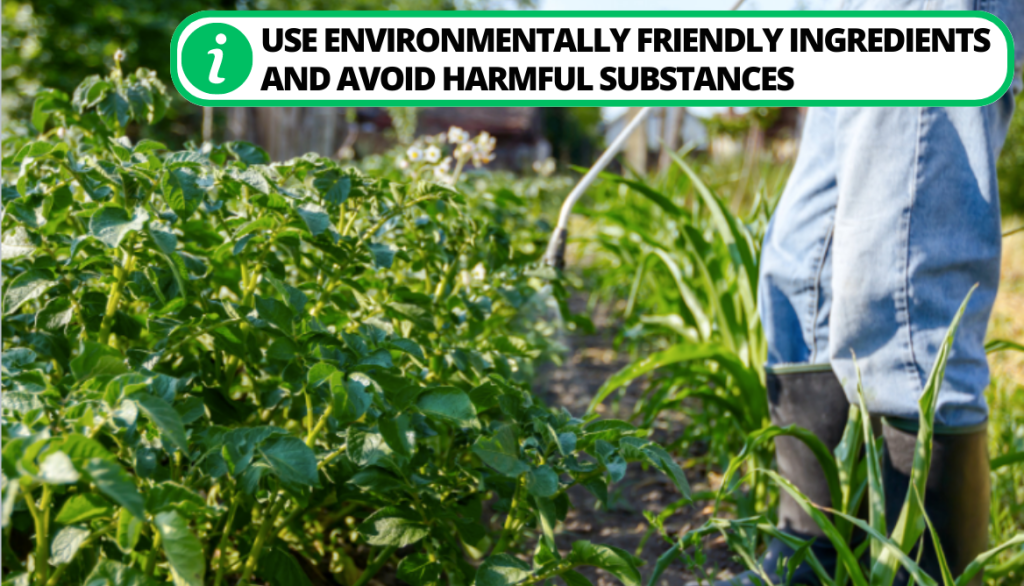
6. Allergies and Sensitivities
Be aware of any allergies you or others may have to the ingredients in the homemade spray. Some ingredients, such as certain essential oils or plant extracts, can cause allergic reactions or skin irritations in some individuals.
If you or someone in your household has known sensitivities, take extra precautions or consider alternative methods of blight treatment.
7. Monitoring and Evaluation
After application, closely monitor your plants for any changes in the blight’s progression. Evaluate the effectiveness of the treatment and be prepared to adjust your approach if needed. If the mess persists or worsens, consider seeking advice from gardening experts or professionals.
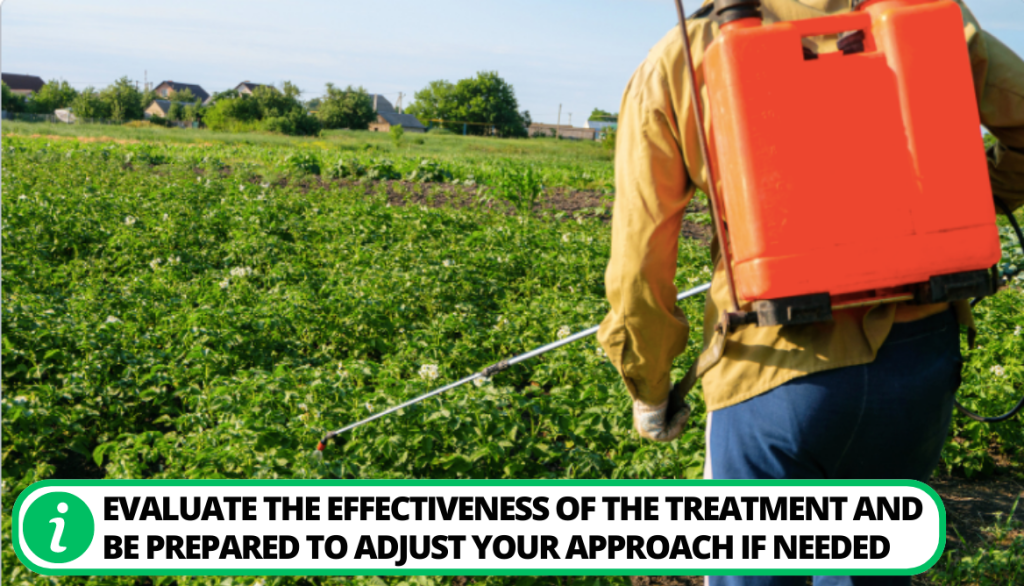
Homemade Potato Blight Spray: 2 Best DIY Methods
You can combat blight spores effectively with homemade sprays. Here, we will discuss two of the best DIY methods for making your own potato blight spray, each formulated with different ingredients. Let’s explore these natural methods step by step.
1. Bordeaux Formula
To create this potato blight spray, you will need the following:
Copper sulfate: | 3 tablespoons |
Hydrated lime: | 3 tablespoons |
Water: | 1 gallon (3.8 liters) |
A spray bottle or sprayer: | 1 piece |
The Steps To Follow:
- Gather the ingredients.
- Start by filling a gallon container with water.
- Then, carefully add 3 tablespoons of copper sulfate to the container.
- Stir the mixture thoroughly until the copper sulfate is completely dissolved in the water.
- Next, add 3 tablespoons of hydrated lime to the container. Lime helps to neutralize the acidity of copper sulfate and improves the spray’s efficacy.
- Stir the mixture again to ensure that the lime is well blended.
- Transfer the spray once the solution is properly mixed into a spray bottle or sprayer.
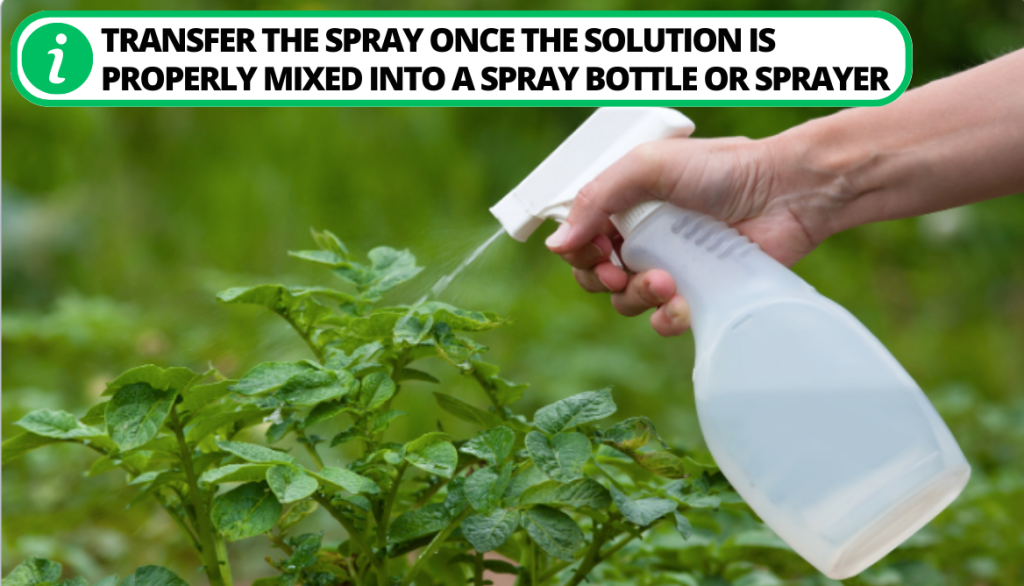
2. Cornell Formula
For this potato blight spray alternative, you will need the following:
Baking soda: | 1 tablespoon |
Vegetable oil: | 1 tablespoon |
Water: | 1 gallon (3.8 liters) |
A spray bottle or sprayer: | 1 piece |
Steps To Mix Ingredients:
- Put all ingredients in place.
- Start by filling a gallon container with water.
- Then add 1 tablespoon of baking soda to the container. Baking soda acts as a natural fungicide and helps prevent the growth and spread of the blight-causing fungus.
- Next, add 1 tablespoon of vegetable oil to the container. The oil helps the solution adhere to the plant surfaces and ensures better coverage.
- Gently stir the mixture to combine the ingredients thoroughly.
- Pour it into a spray bottle or sprayer. Ensure that the container is clean and free from any previous chemical residues.

How to Stop Potato Blight
To combat blight, it is crucial to employ effective prevention and control measures. Here are some top tips to help you stop potato blight;
- Avoid crop rotation i.e. planting potatoes in the same area every year.
- Choose certified disease-free potato seeds.
- Plant potatoes early in the season to reduce exposure to early blight.
- Use appropriate fungicides as a preventive measure.
- Inspect plants for signs of early blight and remove infected plants.
- Provide adequate spacing to improve air circulation.
- Dispose of infected plant debris to eliminate fungal spores.
- Regularly cover the base of potato plants with soil to prevent infection.
- Consider planting potatoes with resistance to early blight and others.
- Stay informed about local conditions and adjust preventive measures.
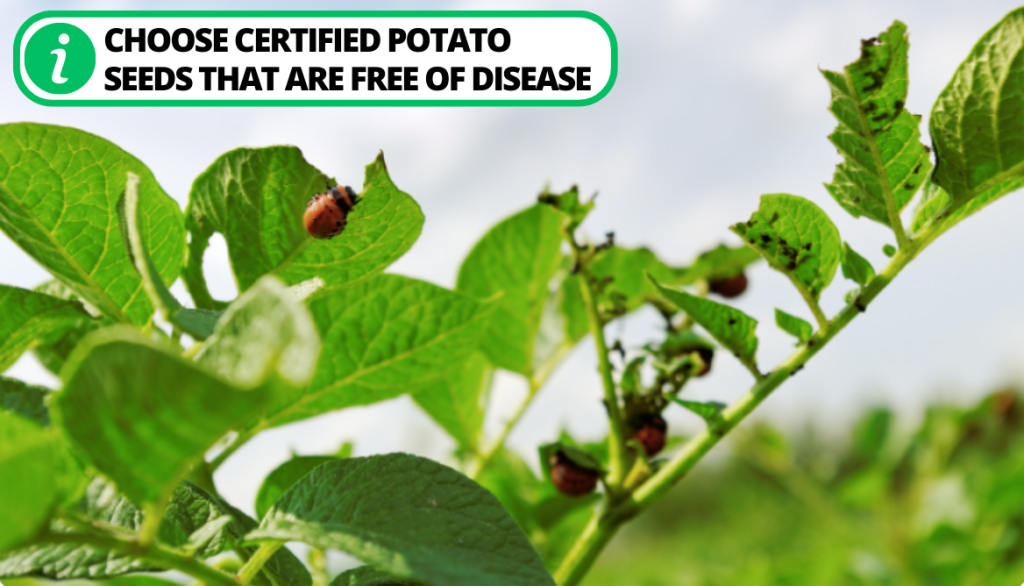
FAQ
What do you spray potatoes with for blight?
To control and prevent blight in potatoes, the most commonly used spray is a fungicide.
What is a natural fungicide for potatoes?
One natural fungicide that can be used for potato plant diseases is a solution made from baking soda.
How do you treat potato blight organically?
To treat potato blight you need to practice crop rotation, choose blight-resistant potato varieties, and also regular inspection of your potato plant.
What is a natural spray for early blight?
Early blight can be controlled on affected plants with natural sprays such as baking soda solution, copper-based fungicides, garlic spray, or neem oil. Spraying should be done in humid weather for effectiveness.
Conclusion
You may safeguard your potato plants from the infamous potato blightand lessen its damage by adhering to the rules and using the right prevention and control techniques.
A simple and accessible method for containing and halting the spread of potato blight is to use homemade sprays. However, it’s necessary to take into account variables like effectiveness, component accessibility, environmental impact, etc. before employing them.
What kind of homemade spray would you use to combat potato blight? Leave your answer in the comment section. Thanks for Reading.
- How to Get Potatoes to Sprout Eyes: Detailed Growing Guide with 3 Options - July 31, 2023
- Weight of a Medium Potato: Revealed in Detailed Guide - July 29, 2023
- Maris Piper Potatoes: 9 Substitutes You Should Know About - July 27, 2023
Hello! I’m Jessica Zander, a garden coach and consultant based in the Boston area (zone 6b), offering virtual consultations across the country and Canada.
I’ve been passionate about gardening since the early 1990s, and in 2022, I launched You Can Do It Gardening to empower individuals to feel more confident in their gardening endeavors.
Following a 30-year career in nonprofit finance and operations, I transitioned out of that field in mid-June of 2023 due to the growing demand for coaching services. Interestingly, my years of presenting financial statements to boards and finance committees proved to be valuable experience for teaching people about gardening! I enjoy sharing skills, providing guidance and suggestions, and collaborating efficiently with clients to make significant improvements to their outdoor spaces, both small and large. I also regularly teach at the Arlington Continuing Education and Cambridge Adult Education.
My approach is direct and practical, akin to Mary Poppins, but tailored to your garden. Clients find satisfaction in saving money and taking pride in their own gardening achievements.

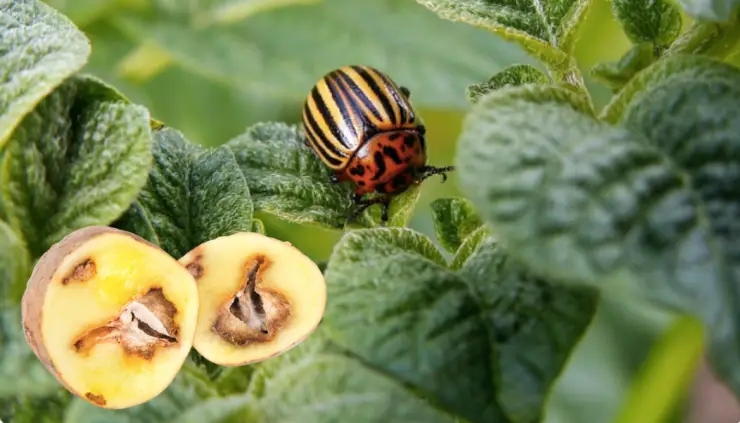
Add comment